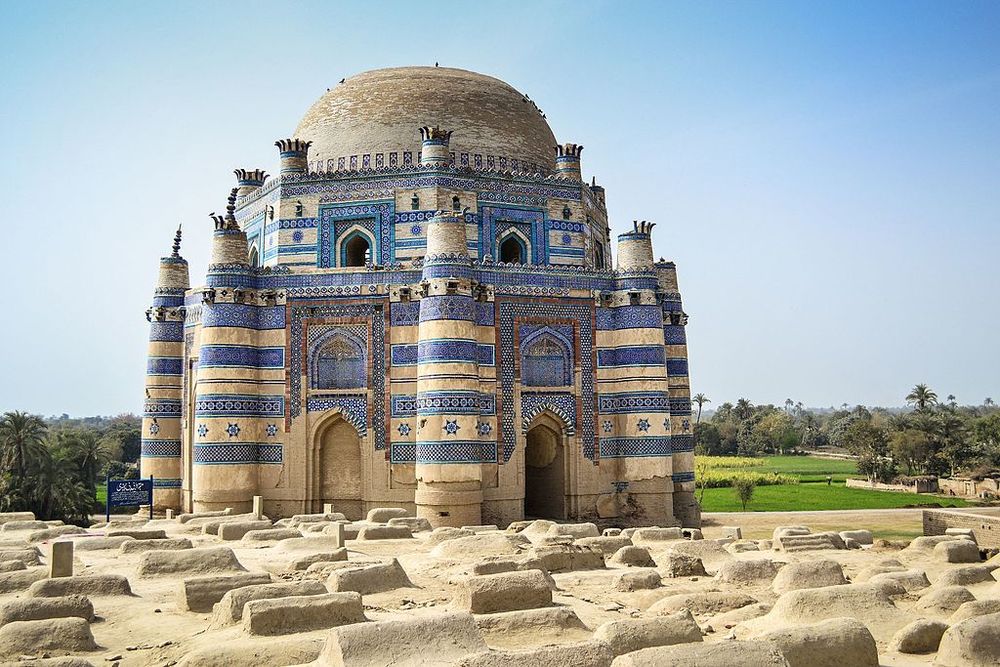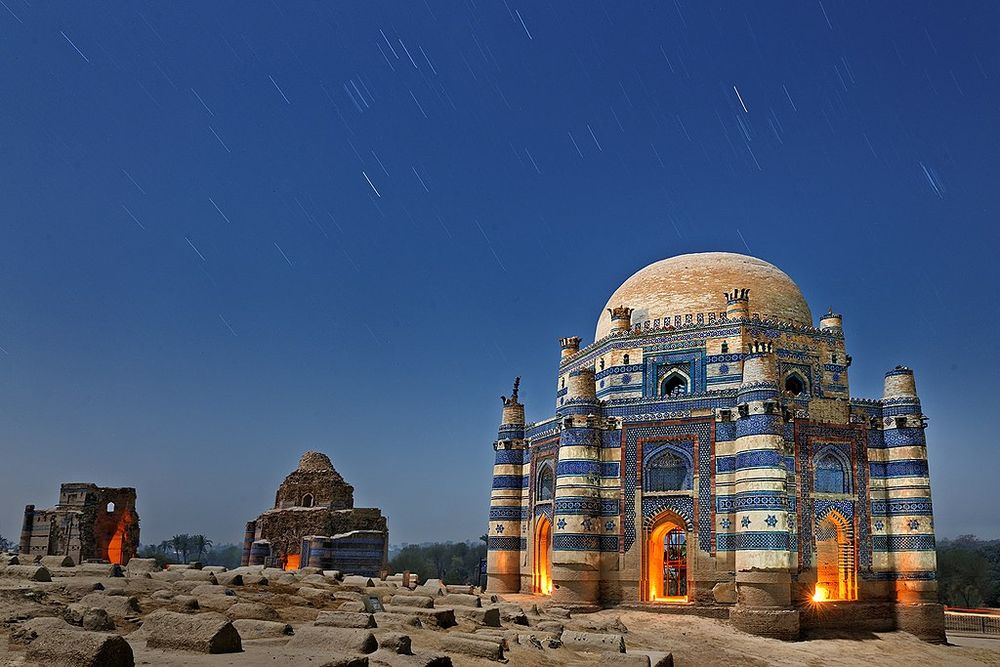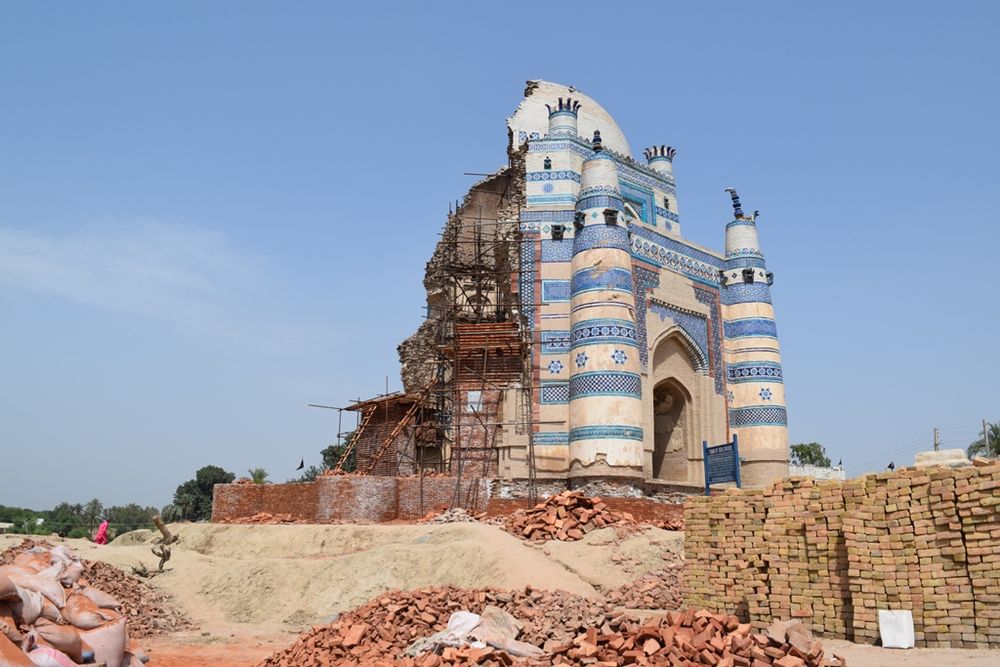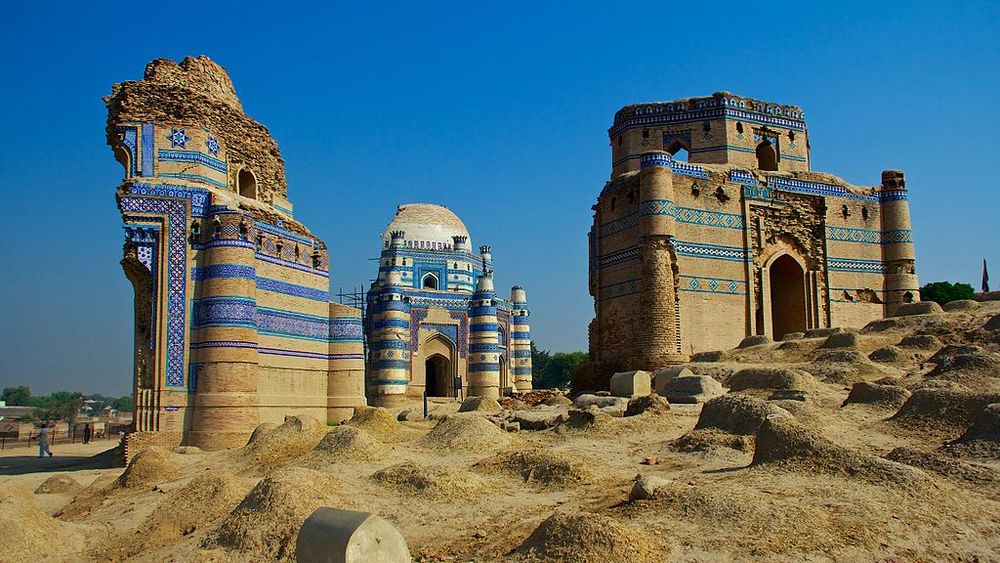The ancient city of Uch, founded by Alexander the Great, in Pakistan's Punjab province, is home to several funerary monuments and shrines dedicated to Muslim mystics, or sufis, from the 12th to the 15th centuries. One of the most beautiful is the Tomb of Bibi Jawindi. This octagonal tomb is embellished with extensive tile work, but is now in a dilapidated state.

Photo: Saadnadeem/Wikimedia
Bibi Jawandi was the great-granddaughter of the famous Sufi saint Jahaniyan Jahangasht (1307-1383), who was known for her mysticism and religiosity. Jahaniyan Jahangasht had a great influence on Bibi Jawandi’s life. The great saint travelled widely (for which he was bestowed the title “Jahaniyan Jahangasht”, which means one who wanders worldwide. His birth name was Mir Sayyid Jalaluddin Bukhari) and left a lasting impression on the South Asian Muslim Society. He implored people to follow the prophet Muhammad’s way of life in speech, conduct and action. He advised people to consume less meat and offer more prayers. He held the soil of the Indian sub-continent in great esteem, for he believed it had touched the feet of Adam.
Bibi Jawindi died in 1403. Nearly a century later, in 1493, Prince Dilshad of Iran got a tomb built in her memory.
The tomb is built of fired bricks on an octagonal base with turrets at each corner of the octagon. A single dome was raised above on a smaller octagonal drum with arched windows. The exterior of the building has three tiers with the top one supporting the dome, while the interior is circular due to thick angled walls rising up two stories. Both the interior and exterior of the building are richly decorated with Islamic scriptures, carved timber, and bright blue and glazed white mosaic tiles.
Centuries of exposure to the elements have ravaged the structure. Half of it has collapsed in a heap of broken bricks and tiles. The other half has been shored up, but the danger of collapse still exist because of the harsh desert-like environment, humidity, and salt infiltration. Furthermore, inappropriate methods of repair have further damaged the complex.
The site consist other tombs as well, most notable is the Shrine of Baha'al-Halim, and the Tomb of Ustead, the architect who designed the Tomb of Bibi Jawindi. But those are in a poorer shape.
The entire complex was submitted for the UNESCO World Heritage status, but since 2004, it’s on the tentative list.

Photo: Abbrar/Wikimedia

A close up of Bibi Jawindi's Tomb. Photo: Usman Ghani/Wikimedia

Photo: Mhtoori/Wikimedia

Photo: Amanasad83/Wikimedia

Photo: Usamashahid433/Wikimedia

Photo: Shah zaman baloch/Wikimedia












Comments
Post a Comment